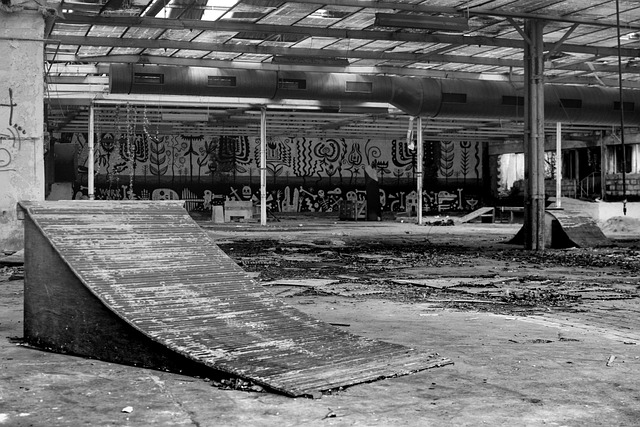San Antonio's harsh winters pose significant challenges for disaster reconstruction, especially regarding water infrastructure. Aging, uninsulated pipes are vulnerable to freezing temperatures and bursts. To prevent these, crucial strategies include using heat tape, insulated covers, and regular maintenance checks. Effective insulation and heating systems in temporary shelters also safeguard lives during post-disaster recovery efforts by mitigating pipe damage from freezing temperatures. By addressing these regional challenges, emergency response teams ensure safer environments for displaced individuals in San Antonio.
San Antonio, like many cities, faces unique challenges during harsh winters, particularly regarding infrastructure damage and displacement caused by disasters. This article explores critical aspects of disaster reconstruction, focusing on temporary shelter solutions. We delve into how these strategies can mitigate the impact of extreme weather, with a specific emphasis on preventing burst pipes during winter. By understanding the risks and implementing effective measures, San Antonio can better protect its residents and infrastructure.
- Understanding Winter's Impact on San Antonio's Infrastructure
- Temporary Shelter Solutions for Disaster Reconstruction
- Preventative Measures: Protecting Against Burst Pipes During Winter
Understanding Winter's Impact on San Antonio's Infrastructure

San Antonio, like many cities across the nation, faces unique challenges when it comes to disaster reconstruction, particularly during the harsh winters. The region’s climate, characterized by freezing temperatures and occasional snowfalls, poses significant risks to the city’s infrastructure, especially regarding water pipes. Preventing burst pipes during winter in San Antonio is a critical aspect of emergency preparedness, as these incidents can disrupt essential services and cause substantial damage.
The cold weather significantly affects pipe integrity, making them more susceptible to ruptures. This problem is exacerbated by the city’s aging infrastructure, where many pipes have reached their end of life or are not adequately insulated. To mitigate this issue, temporary shelter solutions must prioritize insulation and protection against extreme temperatures. By implementing effective measures, such as heat tape, insulated covers, and regular maintenance checks, Preventing burst pipes during winter in San Antonio becomes more feasible. These strategies ensure that critical water supply lines remain intact, facilitating swift recovery efforts after any natural disasters.
Temporary Shelter Solutions for Disaster Reconstruction

In the aftermath of a disaster, providing immediate temporary shelter solutions is paramount to prevent loss of life and ensure basic human needs are met. One significant challenge during winter in cities like San Antonio is preventing burst pipes in newly constructed or damaged structures. To mitigate this risk, disaster reconstruction teams should prioritize insulation and heating systems within temporary shelters. Adequate insulation can significantly reduce the risk of water freezing inside pipes, which can lead to bursts. Heaters placed strategically within these shelters further safeguard against potential pipe damage caused by freezing temperatures.
Additionally, using materials that are known for their frost resistance and installing them properly can fortify structures against extreme winter conditions. As San Antonio navigates through harsh winters, it is crucial to have temporary shelter solutions that address specific regional challenges like preventing burst pipes. By adopting these measures, emergency response teams can create safer, warmer environments for displaced individuals during reconstruction efforts.
Preventative Measures: Protecting Against Burst Pipes During Winter

In cold climates, like those experienced in San Antonio during winter, preventing burst pipes is a top priority for disaster reconstruction and temporary shelter solutions.
Implementing preventative measures becomes even more crucial when temperatures drop, as water within piping systems can freeze, expanding and putting intense pressure on the pipe walls. This pressure often leads to bursts, causing significant damage and costly repairs. Homeowners and builders in San Antonio should consider insulation as a primary defence. Insulating pipes, especially in unheated areas like basements or outdoor spaces, helps maintain a consistent temperature and prevents water from freezing. Additionally, using heat tape or heaters near pipes can provide extra protection against the cold, ensuring a steady flow of water during winter months.
In addressing disaster reconstruction, particularly during San Antonio’s winters, implementing robust temporary shelter solutions and preventative measures like protecting against burst pipes is paramount. By understanding the unique challenges posed by extreme weather, such as the impact on local infrastructure, we can ensure more effective and efficient recovery efforts. Incorporating innovative temporary housing and taking proactive steps to prevent pipe bursts can significantly enhance community resilience and speed up the reconstruction process in San Antonio. Remember that, in preparing for future disasters, learning from past experiences and adopting adaptive strategies are key to fostering a more resilient urban environment.
